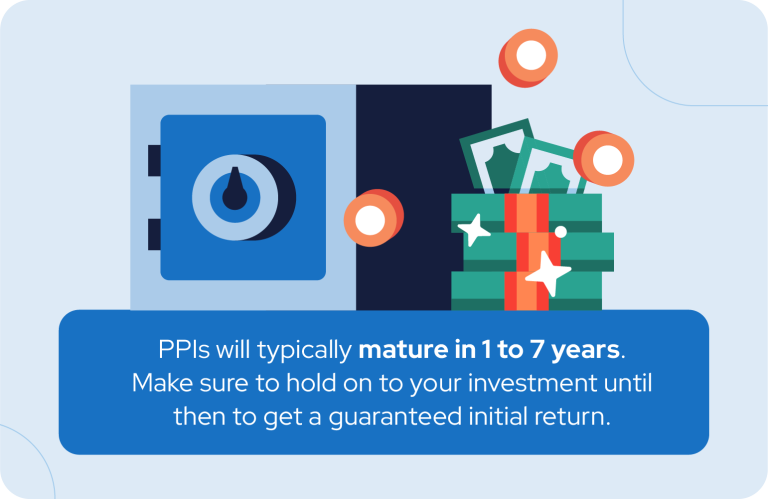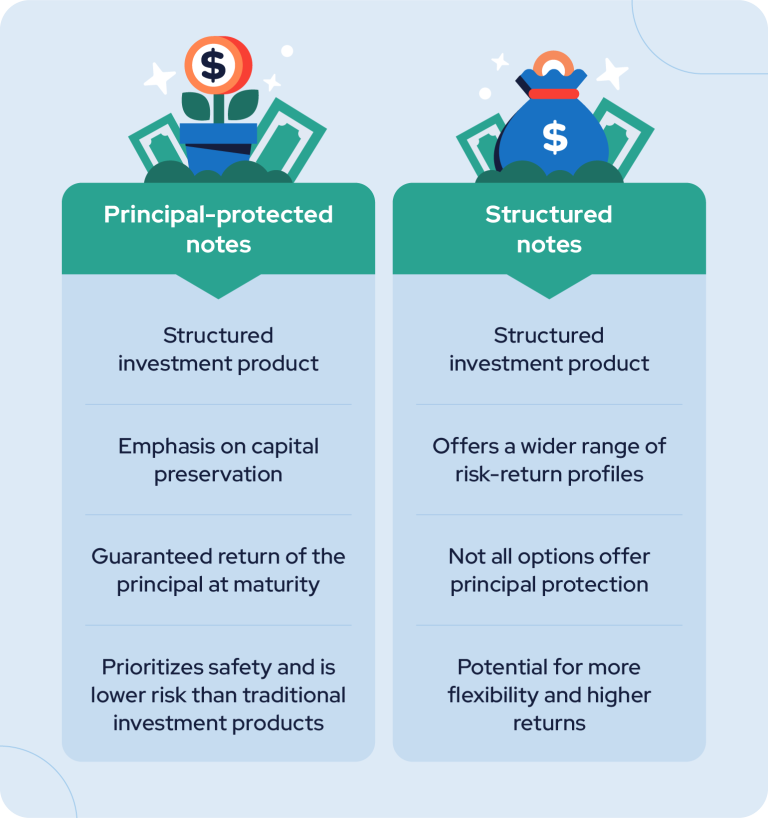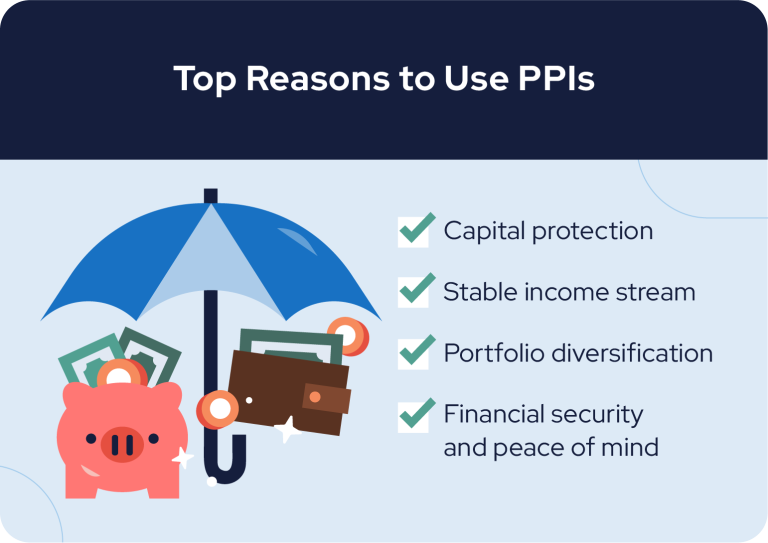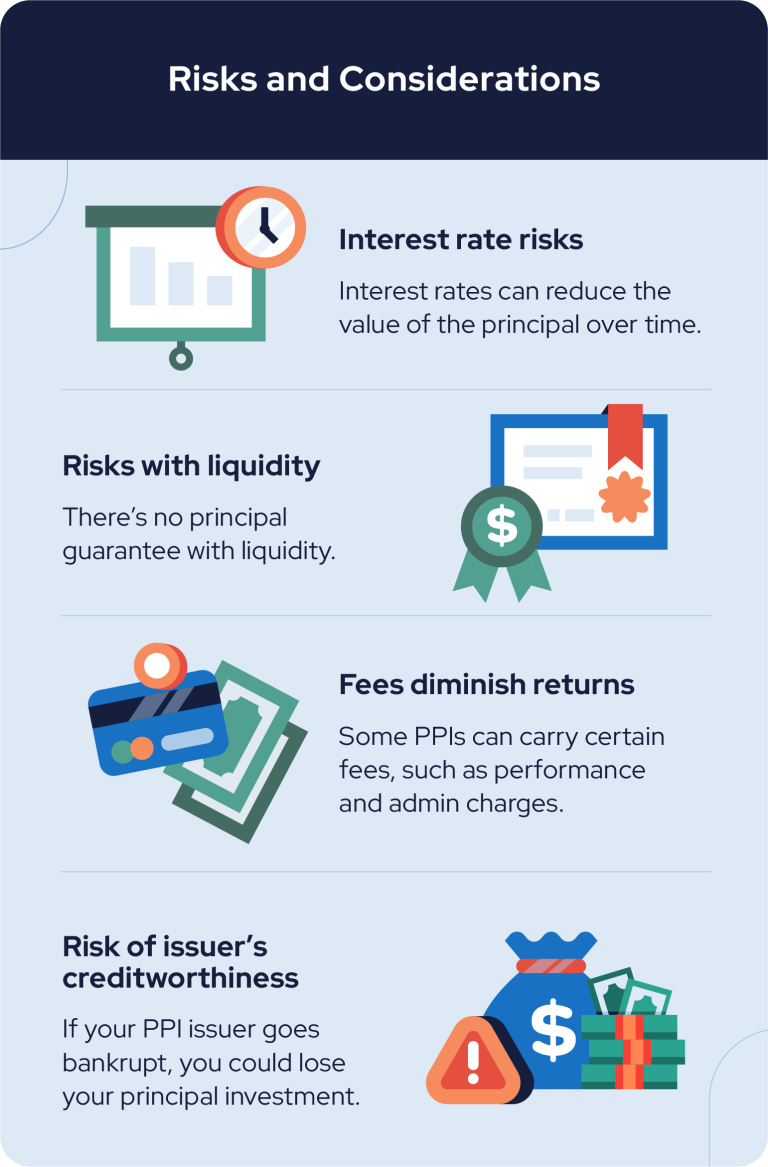Principal Protection: Exploring Alternatives Beyond Traditional Investments
Compared to traditional investments like stocks, principal-protected investments offer less risk and safer returns. These types of investments have guaranteed growth and are a great portfolio addition for those preparing for retirement.

- Written by Christian Simmons
Christian Simmons
Financial Writer
Christian Simmons is a writer for RetireGuide and a member of the Association for Financial Counseling & Planning Education (AFCPE®). He covers Medicare and important retirement topics. Christian is a former winner of a Florida Society of News Editors journalism contest and has written professionally since 2016.
Read More- Edited By
Savannah Pittle
Savannah Pittle
Senior Financial Editor
Savannah Pittle is a professional writer and content editor with over 16 years of professional experience across multiple industries. She has ghostwritten for entrepreneurs and industry leaders and been published in mediums such as The Huffington Post, Southern Living and Interior Appeal Magazine.
Read More- Published: October 23, 2023
- Updated: October 24, 2023
- 5 min read time
- This page features 1 Cited Research Article
- Edited By
Financial security in retirement is essential, especially in times of economic uncertainty and market volatility. That’s where principal protection comes in — it’s a financial and investment strategy that aims to protect the initial capital or savings of individuals in or near retirement.
This strategy can reduce the risk of losing hard-earned money while providing security. Principal protection is especially helpful for seniors with a lower risk tolerance and those who rely on their savings to cover living expenses and health care costs in retirement.
In this guide, learn more about what principal protection is and the benefits, as well as considerations and risks associated with these types of investments.
- Principal-protected investments (PPIs) offer more protection and less risk than traditional investing tactics.
- To guarantee you get your principal return, you must hold onto your PPI until it matures.
- PPIs can offer a more diverse investment portfolio, a stable income stream and more peace of mind knowing your investment is secure.
- Although PPIs offer more protection than traditional investments, there are still risks involved.
What Are Principal-Protected Investments?
PPIs guarantee you get your initial investment back. If the underlying assets perform poorly or decline in value within the market, investors are guaranteed to receive their original investment back at maturity. They also must be held until maturity to guarantee this return — PPIs typically mature within one to seven years.

PPIs offer more protection, less risk and lower returns than traditional investments like stocks and mutual funds. The value of traditional investments can fluctuate and are volatile, which can result in losses if the market performs poorly.
Types of Principal Protection Investments
There are two main types of PPIs: principal-protected notes and structured notes. These investments are designed to protect the original investment amount while offering some level of income or growth.

Principal-Protected Notes (PPNs)
Principal-protected notes are structured notes with fixed-income securities that are guaranteed to return the original investment amount regardless of how the market performs. PPNs can also be called:
- Structured products
- Non-conventional investments
- Structured securities
PPNs are comprised of two components: a derivative and a bond. The bond component promises the return of the initial investment at maturity, and the derivative component gives exposure to the asset, like commodities and stocks.
There are also several types of PPNs:
- Equity-linked: These PPNs link to the performance of a specific stock.
- Currency-linked: This type offers exposure to foreign markets while remaining safeguarded by principal protection.
- Commodity-linked: This type of PPN is linked to how well a certain commodity performs.
Structured Notes
Similar to PPNs, structured notes consist of a fixed-income component and a derivative component linked to an underlying asset or index. The fixed-income portion provides principal protection, while the derivative component can generate returns based on market performance. It’s important to note that not all structured notes carry a principal guarantee like PPNs do.
Benefits

Beyond preserving capital, principal protection offers several attractive benefits to investors.
Stable Income Stream
Many retirees rely on their savings and investments to generate income during retirement. Principal-protected investments, such as bonds or annuities, offer predictable income streams, helping seniors cover daily living expenses, medical costs and other necessities.
Portfolio Diversification
Principal-protected investments often allow for diversification, which is essential for managing risk. Seniors can allocate their funds across various asset classes while maintaining a level of principal protection.

Financial Security and Peace of Mind
Seniors can benefit from the peace of mind and sense of financial security that principal protection offers. Anxiety surrounding their financial future is reduced, and they are better able to enjoy retirement knowing that some or all of their initial investment capital is protected.
Risks and Considerations

Although principal protection safeguards your investments, it’s not completely risk-free. Below are some considerations and risks associated with PPIs:
Interest Rate Risks
There are also interest rate risks with principal-protected investments. When you invest in a principal-protected note, your returns are often linked to a predetermined interest rate or benchmark. If prevailing interest rates rise significantly during the investment period, you may miss out on potentially higher returns available in the market.
Liquid Investments
Unlike publicly traded stocks or bonds, PPIs are typically less liquid in secondary markets. This means that if you want to sell your PPI before maturity, you may find it challenging to find a buyer, and you might have to sell it at a discount.
Fees are also often involved with early liquidation before maturity, and there is no principal return guarantee.
Fees Diminish Returns
The fee risks associated with principal protection investments can vary depending on the specific type of investment and the financial product you choose. Some common fee risks include:
- Admin and management fees: Financial products like structured notes may come with management and administrative fees to cover paperwork, recordkeeping and other administrative expenses.
- Account maintenance fees: Some financial institutions may charge account maintenance fees for holding certain types of principal protection investments within brokerage or retirement accounts. These fees can reduce the overall returns on the investment.
- Sales fees: Some principal protection investments may charge sales loads or commissions when you buy or sell them.
- Performance fees: This is less common with principal protections, but in some cases, structured products may have performance-based fees. These fees are contingent on the investment outperforming a specific benchmark or threshold.
Returns Depend on the Issuer’s Financial Stability
Protected principal depends on the issuer’s creditworthiness. For example, if the issuing business goes bankrupt, you may not get your principal investment back.
Principal protection investments can be a valuable tool in creating a secure and balanced financial strategy, particularly for seniors who prioritize capital preservation during their retirement years. By understanding the risks, rewards and suitability of these investments, you can make well-informed choices that align with your unique financial goals and needs.
To help you better prepare for retirement and ensure your investments are in order, consult with a retirement financial advisor today.
1 Cited Research Article
- JPMorgan Chase & Co. (2023, August 5). Principal Protected Investments. Retrieved from https://www.sec.gov/Archives/edgar/data/19617/000095010307002493/pdf_of-fwp.pdf
Calling this number connects you to one of our trusted partners.
If you're interested in help navigating your options, a representative will provide you with a free, no-obligation consultation.
Our partners are committed to excellent customer service. They can match you with a qualified professional for your unique objectives.
We/Our Partners do not offer every plan available in your area. Any information provided is limited to those plans offered in your area. Please contact Medicare.gov or 1-800-MEDICARE to get information on all of your options.
844-359-1705Your web browser is no longer supported by Microsoft. Update your browser for more security, speed and compatibility.
If you need help pricing and building your medicare plan, call us at 844-572-0696


